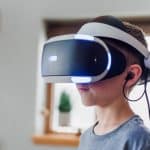The realm of real estate has long favored visual aesthetics in designing and creating spaces. However, a new wave of design-thinking is offering a refreshing perspective on how we perceive and interact with our environments. This approach, known as multisensory design, is a burgeoning field that aims to engage all our senses to elevate the user experience. This article will explore innovative strategies for integrating multisensory design elements in real estate, drawing from reputable sources such as Google Scholar, Crossref, and PubMed.
The Concept of Multisensory Design
Before delving into the strategies, it’s crucial to understand the concept of multisensory design. Rooted in sensory substitution, this design approach seeks to merge the senses in a meaningful way, creating an experience that transcends the traditional reliance on visual cues alone. It’s about building spaces that stimulate not just our sight, but also the senses of sound, smell, taste, and touch.
Research on multisensory design is abundant on scholarly platforms like Google Scholar and Crossref. These platforms provide a wealth of articles and studies exploring the possibilities and benefits of this innovative design approach. According to a featured article on PubMed, multisensory design can significantly enhance the overall user experience by creating more immersive, engaging, and enjoyable environments.
Integrating Multisensory Design in Real Estate
To implement multisensory design in real estate, it’s imperative to understand how our senses work and how they contribute to our perceptions and experiences. Each sensory modality can be manipulated to create specific user experiences, hence its paramount importance in design.
Also to read : What are the ethical considerations in leveraging AI for predictive analytics in real estate investments?
For instance, the visual aspect is predominant in real estate design, often dictating the layout, color scheme, and lighting. However, a multisensory approach takes this further by considering the impact of other senses. The sense of smell, for example, can be engaged by incorporating specific scents to create a pleasant and distinct atmosphere. Sound can be incorporated through the careful selection of materials that either absorb or reflect noise, creating the desired acoustic environment.
The Role of Sensory Substitution in Multisensory Design
Sensory substitution plays an integral role in multisensory design. This technique involves substituting or replacing one sensory modality with another, thereby creating new ways for users to interact with their environment. For example, tactile features could be incorporated into a space to offer an alternative to visual information, particularly beneficial for individuals with visual impairments.
Such strategies are not just about accessibility but also about enriching the user experience. By offering different modes of interaction, spaces become more engaging, interesting, and memorable. Many scholarly articles highlight how sensory substitution can significantly enhance user interactions, making it a key strategy in multisensory design.
Building Multisensory Experiences through Integration
Building multisensory experiences requires careful integration of the sensory modalities. This is not merely about incorporating individual elements that engage different senses, but about creating a harmonious sensory blend that enhances users’ experience in the space.
Integration can be achieved in different ways, such as by aligning sensory elements with the purpose of the space. For instance, a calming visual palette can be paired with natural sounds and soothing scents in a wellness center. Conversely, an entertainment venue might feature vibrant colors, dynamic lighting, and lively sounds to create an energetic atmosphere.
Strategies for Multisensory Design Implementation
Successful implementation of multisensory design in real estate starts with recognizing that every space invokes different sensory responses. Therefore, design strategies should be customized to the intended use of the space.
One effective strategy is to conduct user research to understand the preferences and needs of the target audience. This can inform the selection of appropriate sensory elements. Another strategy is to collaborate with experts from diverse fields. For example, working with acousticians can help optimize the sound environment, while partnering with olfactory scientists can guide the selection of scents.
Lastly, it’s essential to continually evaluate and adjust the sensory elements based on user feedback. Multisensory design is not a one-time effort, but an ongoing process of refinement to ensure that the space continually meets the evolving needs and expectations of its users. This iterative approach is key to creating environments that truly enhance the user experience.
The Science Behind Multisensory Design
By blending information from various sensory sources, multisensory design can create an innovative and enriching user experience. The science behind this approach is based on the theory of multisensory integration, extensively explored on platforms like Google Scholar, Crossref, and PubMed. Multisensory integration refers to the process of combining information from different sensory modalities to form a coherent and comprehensive perception of our environment.
In the realm of real estate, designers can leverage this concept to create spaces that are not only visually appealing but also stimulate the other senses. For instance, the use of ambient sounds can create an acoustic environment that contributes to the overall mood and atmosphere of a space. Similarly, incorporating tactile elements can invoke a sense of comfort and familiarity, further enhancing the overall user experience.
Furthermore, the field of human-computer interaction (HCI) has shed light on the potential benefits of incorporating multisensory combination in real estate design. HCI focuses on the design and use of computer technology, with a particular emphasis on the interfaces between humans and computers. The insights derived from HCI can be applied to physical spaces to create more interactive and engaging environments. For instance, interactive displays could be used to provide visual, auditory, and haptic feedback, thereby enhancing user engagement.
Inclusive Design Through Sensory Substitution Techniques
One of the key principles guiding multisensory design is the concept of inclusive design, which ensures that spaces are accessible and usable by as many people as possible. To this end, sensory substitution techniques can make a significant difference. These techniques involve substituting one sensory modality, such as vision, with another, such as touch or sound. This idea is deeply rooted in the work of Paul Bach-y-Rita, a pioneer in the field of sensory substitution.
Inclusive design acknowledges the diversity of human abilities and experiences. For instance, an individual with a visual impairment may rely heavily on their sense of touch or hearing to navigate their environment. Hence, engaging these senses can significantly improve their experience within a space. This could be achieved through tactile floorings or auditory cues to assist with wayfinding.
PMC free articles on PubMed and Crossref provide a wealth of research highlighting the potential of sensory substitution techniques in creating more inclusive environments. As such, these techniques have become an integral part of the multisensory design approach.
Conclusion: The Future of Multisensory Design in Real Estate
The strategies for integrating multisensory design elements in real estate are rapidly evolving, driven by a growing understanding of multisensory processing and the benefits of creating more engaging and accessible spaces. As a result, the field is attracting increasing attention from researchers and practitioners alike, with a growing body of literature available on Google Scholar, PubMed, and Crossref.
Looking forward, it’s clear that multisensory design has the potential to revolutionize how we design and interact with our environments. By engaging all our senses, this approach promises to create more immersive, engaging, and inclusive experiences, thereby taking user experience to new heights. As such, multisensory design is set to become a cornerstone of real estate design in the years to come.
In conclusion, the integration of multisensory design elements in real estate is not merely about creating visually appealing spaces. Rather, it’s about harnessing the power of our senses to create environments that truly resonate with users. As we continue to explore and innovate in this exciting field, the possibilities are truly endless.
















